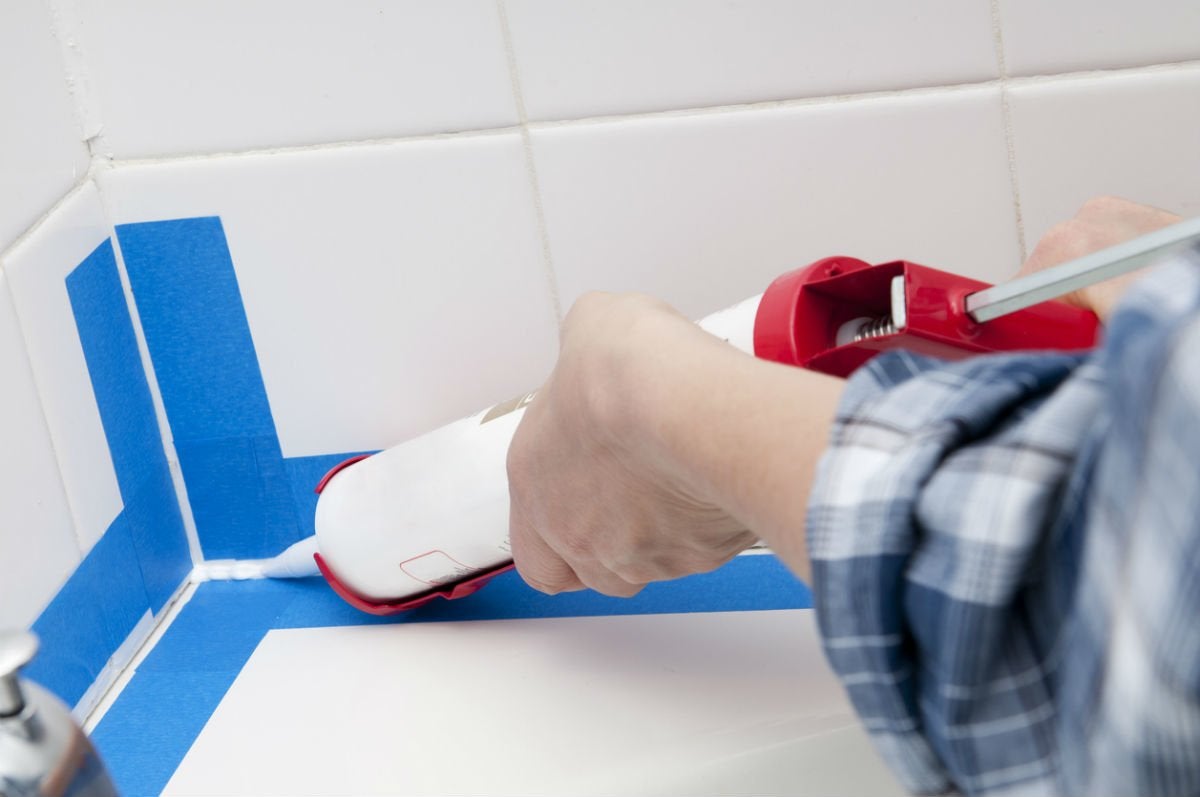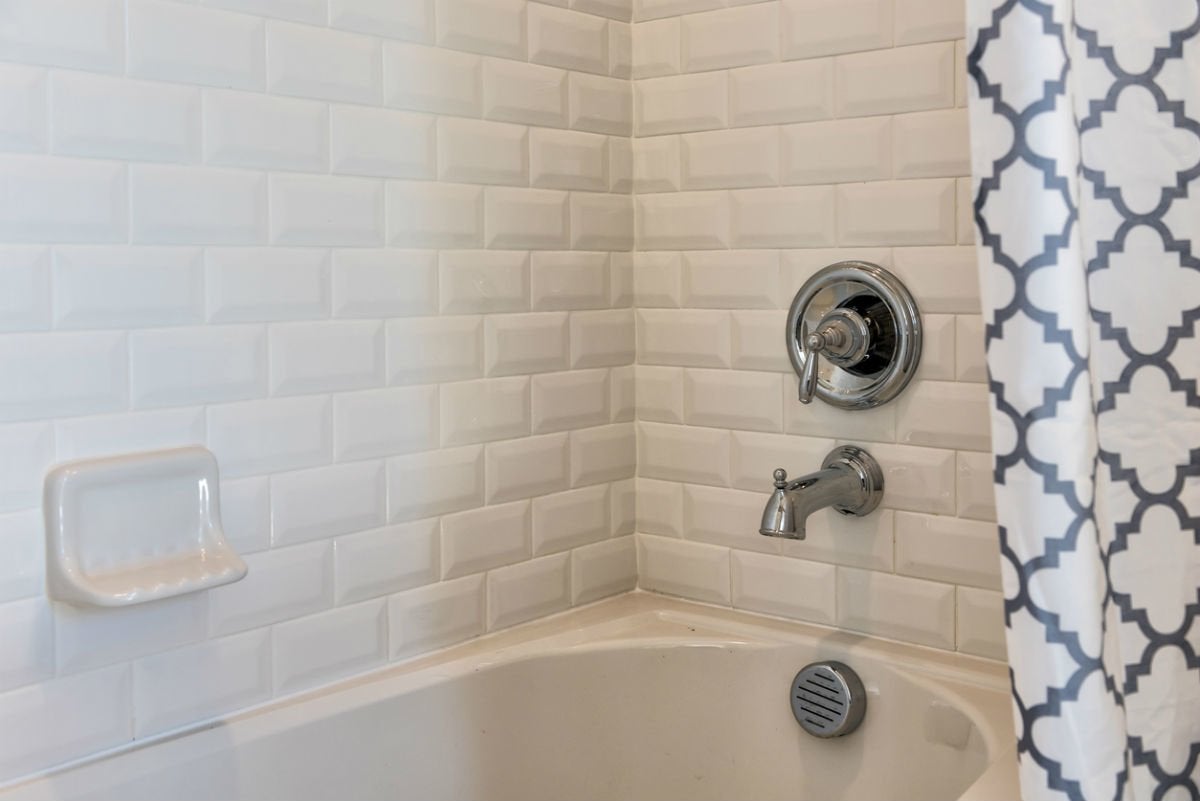Silicone Caulking On Fingertips Gardening
BobVila.com and its partners may earn a commission if you purchase a product through one of our links.

Photo: istockphoto.com
While DIYers can obsess about caulking technique, the truth is that laying down the perfect bead will do little good if you don't use the right caulk for the job. This viscous, waterproof paste is primarily used to seal joints where two surfaces meet (e.g., where the tub meets the wall) or to fill cracks (which commonly crop up in the shower floor) to keep out air, moisture, and dirt.
To defend your shower or tub against these threats, the garden-variety latex caulk commonly used on drywall, window frames, and wooden doors simply won't cut it. The best caulk for the shower or tub has special properties that keep it pristine and structurally intact in the unique environment of the bathroom. Read on for aspects to consider when buying caulk for your bathroom project and see why we find the following products top-notch:
- BEST FOR BIG JOBS: Gorilla Silicone Sealant Caulk
- BEST FOR SMALL JOBS: Red Devil DuraGuard Kitchen & Bath Caulk
- BEST MILDEW PREVENTION: GE Sealants & Adhesives Advanced Silicone
- BEST QUICK-DRYING: DAP INC 18152/11440 10.1oz White Alex Plus
- ALSO CONSIDER: Loctite Polyseamseal Acrylic Caulk with Silicone

Photo: istockphoto.com
Important Qualities in Caulk for Showers and Bathtubs
Material Options
Caulk made of pure silicone or siliconized latex/acrylic (i.e., latex or acrylic caulk with added silicone) adheres well to common shower and tub materials, including porcelain, ceramic, stone, fiberglass, and glass.
- Choose pure silicone for a more durable caulk job that you don't intend to paint afterward. It's more waterproof and flexible, so it better resists rot, rarely cracks with thermal expansion (when the shower or tub material expands or contracts with temperature changes), and lasts longer (40 or more years). However, it doesn't take paint well and is about 10 percent more expensive than the alternative.
- Siliconized latex/acrylic caulk , on the other hand, is easier to apply and correct than sticky pure silicone, which can be a real pain if you make a mistake during application. But it's less moisture-resistant and more likely to crack with thermal expansion, so your caulk job will be more short-lived (30 to 40 years).
Packaging Options
Caulk is sold in small squeeze tubes or large cylindrical cartridges, each type suited for different scale projects and requiring a unique application. Generally, cartridges are suited for large caulking jobs, such as sealing the perimeter of a tub, as they contain more caulk by volume and afford more precise application. But they must be loaded into a caulking gun and dispensed by pressing down on the gun's trigger. Squeeze tubes are better for small-scale projects, such as filling a crack in the shower floor. The caulk can easily be applied by hand with a simple squeeze of the tube, but it has a smaller coverage area because there's less of it by volume.
Mildew and Mold Prevention
Most pure silicone and siliconized latex/acrylic caulks are formulated with mildewcides and fungicides (chemicals that destroy mildew or fungus, respectively) to minimize the formation of stain-causing mildew or mold on the caulk. But for a rot-proof caulk job, check the packaging for the terms "for bath," "mildew-proof," or "mold-proof," along with the number of years the caulk can be expected to hold up to mildew and/or mold.
Color Choices
Both pure silicone and siliconized latex caulk are sold in a variety of colors, including clear, white, cream, and brown. Painting over caulks labeled "paintable" gives you even more color options. Clear caulk, the most versatile choice, blends into showers and tubs light or dark; it's your best option if you want to ensure that there is no contrast between the color of the caulk and the shower or tub. White caulk, which pairs well with most shower and tub colors, is a good option if you're caulking a white shower or tub or have darker fixtures and don't mind a color contrast between the caulk and the shower or tub.
Dry and Cure Times
Pay attention to two timeframes listed on the caulk package: dry time and cure time. Dry time refers to how long it takes for the caulk to dry to the touch, whereas the cure time refers to when the caulk will fully set and ready for use and exposure to water. Pure silicone and siliconized latex/acrylic caulks have similar dry and cure times—anywhere from half an hour to 12 hours to dry and two hours to 10 days to cure. If you're caulking the only shower or tub in the house, choose caulks with dry and cure times on the low end of these ranges so that your bath won't be out of commission for days.
Our Top Picks

Photo: amazon.com
Heavy-duty caulking jobs, such as sealing the joints of a shower or tub or filling large cracks, call for this pure silicone caulk that can last as long as you own your home. Sold as a 10-ounce cartridge, the clear caulk boasts a flexible, waterproof, and rot-resistant formula that withstands whatever bath time throws at it without cracking, yellowing, or molding. The sealant goes on with a caulking gun and adheres well to fiberglass, glass, and other common shower and tub materials. It dries in 30 minutes and cures in one day.
Pros
- Durable caulk for heavy-duty jobs like sealing shower joints
- Comes in 10-ounce cartridge
- Clear, so no color matching is necessary
- Flexible, waterproof, and rot-resistant
Cons
- Requires a caulking gun
- Not paintable

Photo: amazon.com
Whether touching up a small span of crumbling caulk around your bathtub or filling a hairline crack on the shower floor, speed your way through small or detail-oriented tasks without sacrificing durability with this squeezable caulk. The flexible, rot-resistant siliconized acrylic formula boasts long-lasting protection against temperature changes and mildew. Available in a 5.5-ounce tube, the white caulk goes onto porcelain, ceramic, glass, and more materials by hand and can be painted. The caulk dries in one hour, cures in three days, and lasts up to 35 years.
Pros
- 5.5-ounce tube of durable, mold-resistant caulk for small jobs
- Easy application, no caulk gun required
- Paintable and washes off fingers with water
- Dries in 1 hour, cures in 3 days
Cons
- Can be sticky and difficult for some to apply
- For interior use only
![]()
Photo: amazon.com
Mold and mildew are no match for this 2.8-ounce tube of rot-resistant pure silicone caulk. This waterproof caulk provides up to 10 years of protection from stain-causing mold and mildew. Its squeezable formula goes on as a smooth, consistent bead—with minimal odor—and easily adheres to stone, metal, and other common shower and bath materials without staining. It dries in 30 minutes and cures in six hours.
Pros
- Silicone formula with a watertight seal
- Specially designed for mold and mildew protection
- Protects for up to 10 years
- Dries in 30 minutes, cures in 6 hours
Cons
- For small jobs only; comes in 2.8-ounce tube
- Not paintable
- Requires mineral spirits for cleanup after applying

Photo: amazon.com
Each tube in this two-pack of caulk with silicone contains 10.1 ounces of white caulk, an excellent value for jobs big and small. It is durable and paintable. The caulk goes on with a caulk gun and can adhere to glass, ceramic, metal, and stone surfaces. It has a 30-minute drying time and can cure to a mildew- and mold-resistant seal in 2 hours. Durable enough to last at least 35 years, depending on the environment, it has an exterior-friendly formula.
Pros
- Affordable 2-pack; 20 ounces of caulk in total
- Durable and adheres to most surfaces
- Paintable
- Dries in 30 minutes, cures in 2 hours
Cons
- Requires caulking gun
- Might include more than needed for some jobs

Photo: amazon.com
Once applied, this paintable caulk stays crisp and crack-free, as the flexible siliconized acrylic caulk locks out air, moisture, dirt, dust, and pests that would damage other caulks. The formula effortlessly goes onto metal, plaster, and other materials with a caulking gun. It dries in 30 minutes, cures in one day, and can last for 40 years.
Pros
- Paintable, crack-free caulk
- Includes silicone to lock out moisture and dirt
- Adheres to most materials
- Dries in 30 minutes, cures in 1 day, lasts 40 years
Cons
- Requires caulking gun to apply
Our Verdict
The best caulk for your shower dries quickly and holds up to seal out water for many years. The Gorilla caulk is a top choice for big jobs for its durability and 10-ounce size. For less intensive jobs, check out Red Devil caulk, which comes in a smaller tube.
How We Chose the Best Caulk for Showers
When sealing corners and seams in showers, the best caulk can keep water out. Pure silicone is the most durable and waterproof, but it can't be painted after applying. Siliconized latex or acrylic caulk goes on easier and with less sticking to fingers, but it might not last as long. We included both types in this curated list and checked for mildew and mold prevention. We also considered packaging, color choices, and whether you need a caulk gun to apply the product. Finally, most of the picks on this list dry and cure quickly.
FAQs
Q. Is there a difference between caulk and sealant?
Yes, there is a difference. Although the terms are used interchangeably, caulk and sealant differ in elasticity. Both fill cracks or seams, but caulk is more rigid and sealant is more flexible. Sealant can hold up better in areas where materials expand and contract.
Q. Do you caulk the inside of a shower enclosure?
You should caulk any areas of the shower enclosure where water can get in, and especially when the existing caulk begins to crack or crumble.
Q. How do I keep my shower caulking white?
The best way to keep shower caulking white is to make sure it has no cracks to let mildew in. Keep the caulk clean and scrub stubborn stains off with a soft brush like a toothbrush. To clean naturally, try a paste of baking soda mixed with water or vinegar, or use bleach or your regular bathroom cleaner. A caulk or grout pen can hide some stains that remain after cleaning.
Q. Is black mold in shower caulk dangerous?
Any sign of mold or mildew on or around shower caulk is a sign that water can be getting through. Clean it thoroughly and evaluate the existing caulk to see if it needs replacing, taking proper safety precautions when removing the moldy caulk.
Q. How do you prevent mold in shower caulking?
If mold is a problem in a shower, choose a silicone sealant for the best chance of keeping water and mildew out. Ventilate the bathroom to remove moisture from the air when showering and re-caulk as needed to make sure water does not seep through cracks in the caulk.
Silicone Caulking On Fingertips Gardening
Source: https://www.bobvila.com/articles/best-caulk-for-shower-or-bathtub/
Posted by: hyerlorge1995.blogspot.com

0 Response to "Silicone Caulking On Fingertips Gardening"
Post a Comment